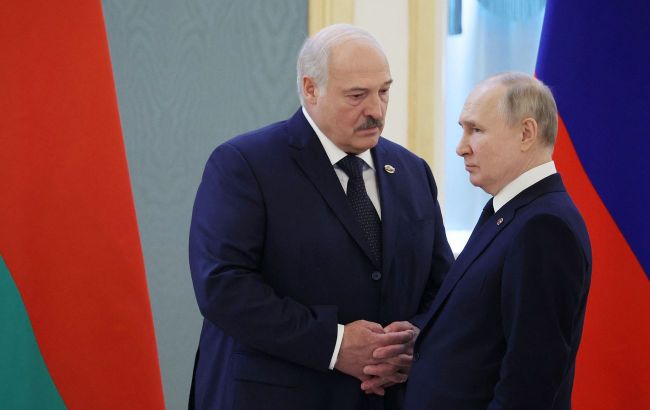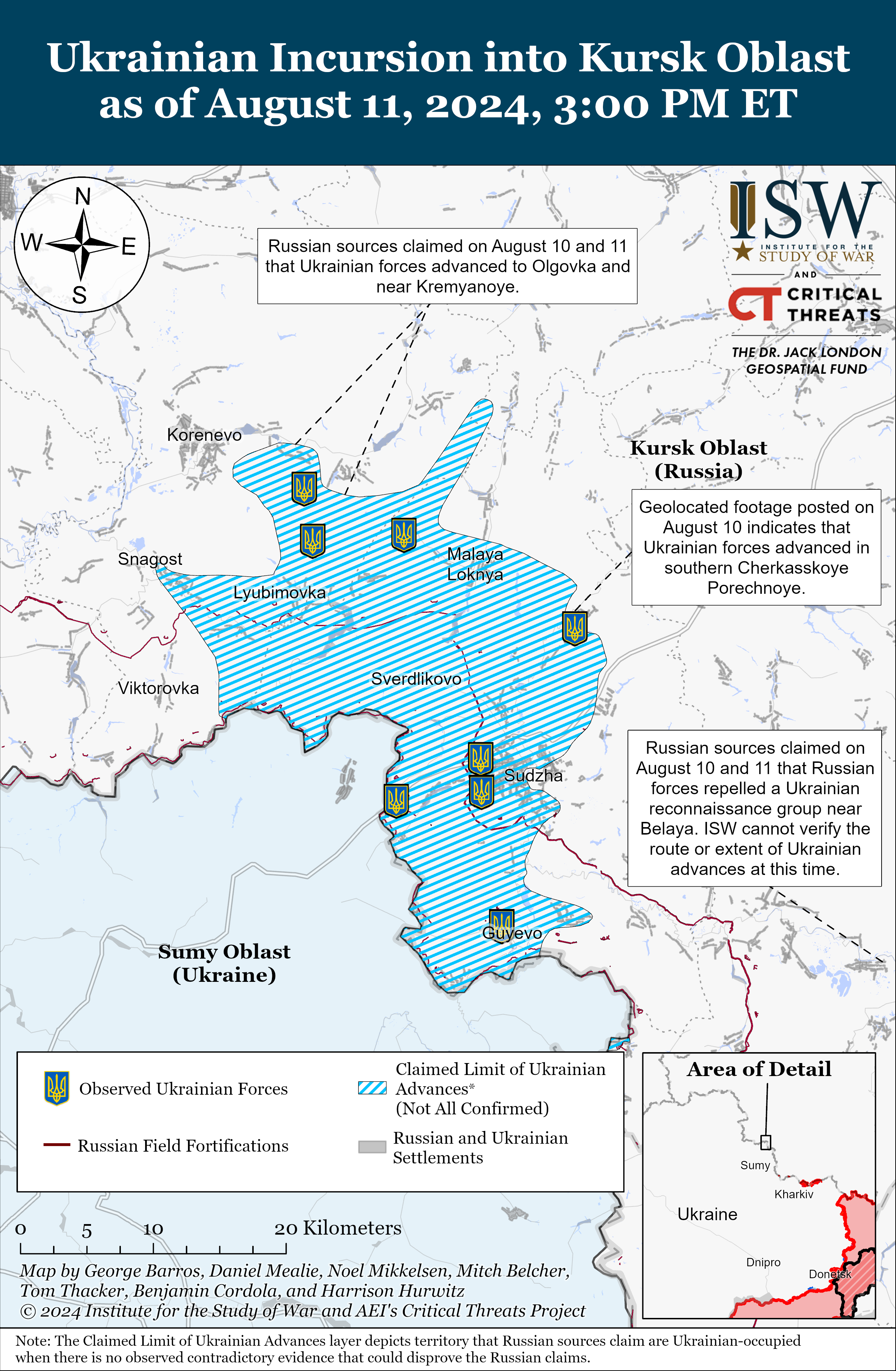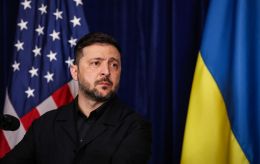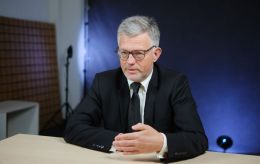Kursk breakthrough. Why Lukashenko moves troops and whether Russia plans retaliatory strike on Ukraine
 Photo: Alexander Lukashenko likely announced deployment of troops to Ukraine's border in solidarity with Vladimir Putin (Getty Images)
Photo: Alexander Lukashenko likely announced deployment of troops to Ukraine's border in solidarity with Vladimir Putin (Getty Images)
Amid the operation in the Kursk region of Russia, Belarusian self-proclaimed president Alexander Lukashenko announced moving troops to the Ukrainian border. Meanwhile, Western media are reporting on Russia possibly preparing a strike on Kyiv in retaliation for the Kursk breakthrough.
Contents
- Week-long operation in Kursk region: What's happening now
- Why Lukashenko announced deployment of troops to Ukraine border
- Threat of counter-breakthrough from Belarus?
- Revenge for Kursk breakthrough? Is Russia preparing massive attack on Kyiv
Week-long operation in Kursk region: What's happening now
Last week, all attention was focused on the Kursk region, where Ukrainian troops have apparently broken through the Russian lines and are trying to advance as far as possible.
The operation is not like the previous limited raids into the Belgorod and Bryansk regions. This is also because the breakthrough, according to numerous reports, involved groups of several regular units of the Armed Forces of Ukraine.
The offensive uses aviation, cannon artillery, and HIMARS missile systems. The latter were apparently used to defeat the Russian convoy near Rylsk. As a result, the enemy could have lost up to one battalion.
At first, the Russians deployed only scattered forces of border guards, army border protection units, and motorized riflemen. Later, there were reports of reinforcements being sent in from other directions. But despite the Russian defense ministry's victorious statements, reports of Ukrainian forces advancing continued. By the end of the week, according to some reports, Ukrainian troops began to consolidate, dig in and set up strongholds.
The Institute for the Study of War (ISW) has observed advances to the west and northwest of the Kursk region. Analyzing geolocated footage, it concludes that the offensive forces control the western part of Sudzha, are fighting in the direction of Lgov, Korenevo, and Rylsk, and could take control of some other settlements.
According to estimates by the Russian news outlet Agentstvo, the area of fighting has increased to 720 square kilometers. The farthest point is the village of Obshchiy Kolodez in the Korenevsky district, 28 kilometers from the border.

Photo: Approximate area of hostilities in the Kursk region (Institute for the Study of War)
The operation is taking place in almost total silence from the Ukrainian side. There has been no official discussion of the offensive so far. All the news is based on Russian and Ukrainian Telegram channels, online videos, statements by the Russian defense ministry, and Western media.
However, President Volodymyr Zelenskyy said once that the head of the Armed Forces, Oleksandr Syrskyi, was constantly reporting “on our actions and the pushing of the war into the aggressor's territory.”
“I am grateful to every unit of the Defense Forces that ensures it. Ukraine proves that it really knows how to restore justice and guarantees exactly the kind of pressure that is needed - pressure on the aggressor,” he said without mentioning the events in the Kursk region.
Why Lukashenko announced deployment of troops to Ukraine border
The breakthrough in the Kursk region has caused a noticeable revival in Belarus. On Saturday, Alexander Lukashenko announced the deployment of troops to the Ukrainian border. The pretext was the unexpected results of the breakthrough and the alleged interception of Ukrainian attack drones over Belarusian territory.
“Two days ago, they attacked in the Kursk direction, where they advanced several tens of kilometers - 30-35. They are digging in there. And this provocation with the aim of striking Russia,” he said and threatened that ”provocations will not go unanswered.”
According to defense minister Viktor Khrenin, Polonez multiple launch rocket systems and Iskander missile systems have been deployed to the border regions of Gomel and Mozyr. His office also published photos and videos of tanks being loaded onto railroad vehicles. However, the equipment does not appear to have reached the border.
Most likely, this is because Lukashenko again “looped” and lied at least twice in his statements, said a military expert, former spokesman for the General Staff of the Armed Forces of Ukraine Vladyslav Seleznov.
Firstly, when he talked about Ukrainian drones and the work of combat aircraft. According to the Belarussian Hajun monitoring channel, there were no drones, no flights of Su-30 or Mi-24 helicopters. Secondly, when he announced the reinforcement of troops on the border, which was not confirmed by the Ukrainian side.
“Lukashenko is an experienced politician and understands the risks that Belarus and he personally may face in the event of aggression against Ukraine. I think he clearly understands that we have a specific enemy, and it is Russia. Lukashenko's statements only create the appearance that he is allegedly involved in the processes. These are empty statements that have nothing to do with reality,” he told RBC-Ukraine.
Of course, the thousand kilometers of border with Belarus is also part of the combat line. It is currently inactive, but the Ukrainian forces are ready and are taking measures to fortify it in the Volyn, Rivne, Zhytomyr, and Kyiv regions.
“So, one should consider the story as fake. It is aimed at showing Vladimir Putin that his Belarusian counterpart is also allegedly involved in the military processes. However, his statements are unlikely to be transformed into practical steps involving the Belarusian army in the confrontation with the Ukrainian Armed Forces,” Seleznov said.
Oleksandr Kovalenko, a military and political observer of the Information Resistance Group, suggests that Lukashenko could have transferred some equipment.
“To show that he is concerned about the events (in the Kursk region - ed.) and is in solidarity with Russia. But I don't think we should take it as a serious threat. Because all of Lukashenko's actions are purely demonstrative. Nothing more,” he said.
Threat of counter-breakthrough from Belarus?
According to Andriy Kovalenko, head of the National Security and Defense Council's Center for Countering Disinformation, Lukashenko is trying to help Putin by deploying Polonez, Iskanders, and tanks. For example, by diverting the attention of the Ukrainian command to the northern direction.
To date, no movement of Belarusian equipment to the Ukrainian border has been recorded. The spokesman for the State Border Guard Service, Andriy Demchenko, suggested that the situation is being escalated to play along with Russia. Photos and videos of the transfer are published as part of an information campaign.
“It is possible that some units will be deployed in the direction of the border with Ukraine, but at the moment, no additional forces are being recorded near our border,” Demchenko added.
Another argument for Lukashenko once again taking demonstrative steps is a video from the Belarusian defense ministry. “If you look at the video, the tanks are not protected from FPV drones. Not only the 'grills', but also the equipment for electronic warfare. It won't take long for our units with kamikaze drones to turn them into a pile of scrap metal,” explains Vladyslav Seleznov.
 Photo: Belarus deploys tanks without protection from FPV drones (t.me/modmilby)
Photo: Belarus deploys tanks without protection from FPV drones (t.me/modmilby)
Speaking about the threat of a counter-breakthrough from Belarus to the Kyiv or Chernihiv regions, RBC-Ukraine's experts agree that there is none.
“Neither the concentration of Belarusian forces nor the occupying Russian army in the areas bordering Ukraine has been recorded. This means that we should not assume that this can happen even in the medium term. Any movement will definitely be noticed and, accordingly, countermeasures will be taken,” Seleznov added.
Assuming that the Belarusian army decides to make a breakthrough - it will be a suicide mission for it, Oleksandr Kovalenko is convinced.
“The entire ground army of Belarus is slightly larger in number than the Russian group that was in the Kursk region. During the offensive, if we are talking about the north of Ukraine, they will suffer heavy losses. Taking into account the defense lines that are prepared after 2022. This is a suicide mission, and I don't think there is a threat of it,” the expert believes.
Revenge for Kursk breakthrough? Is Russia preparing massive attack on Kyiv
As Ukrainian troops have made noticeable advances in the Kursk region in recent days, Russia could likely take revenge for its failure with a massive air attack, The Times writes.
Citing a senior Ukrainian defense ministry source, the media says that an aggressive response could include striking important targets in Kyiv. For example, the Verkhovna Rada and other government buildings.
“Russia feels the need to give a very tough response, something grandiose. To show the world that it is all-powerful and that something like Kursk will not go unpunished,” the source said.
Over the weekend, the Russians have already conducted a test attack with six missiles. Four were fired at Kyiv and two at Poltava. A man and a four-year-old child were killed in the Brovary district. Experts have determined that they were killed by a North Korean KN-23 ballistic missile.
According to The Times source, the attack in retaliation for the failure in the Kursk region will be much larger. “It could be hundreds, using sophisticated weapons, cruise missiles, ballistic missiles, and Shaheds. This could be a big problem for our air defense. But I believe we will be able to stop them,” he said.
In any case, the Russians will attack Ukraine in August, Kovalenko says.
“There is a high risk of an attack on Independence Day, they are preparing for it in advance. But will it be an apocalyptic strike? No. They no longer have the potential to launch 150-200 missiles. We have already seen everything they can do. It is quite possible that they could hit the government quarter. But again, Kyiv has quite good air defense, and it will be very difficult to carry out an attack,” he explained.
Seleznov doubts that Russia will take revenge on emotions. The enemy is pragmatically assessing its forces and the capabilities of the Ukrainian air defense system.
“The risks of missile and drone attacks exist, and we must always be on the alert. Will there be a massive attack on Kyiv on August 23 or 24? The enemy will strike without being tied to dates, but only when and in the way it has the resources to do so,” he told RBC-Ukraine.
Resources are still a key factor, the expert says. And if there is parity or an advantage of Ukraine in the means of repelling an air attack, the enemy has no chance.
“Kyiv is well-protected from drones and missiles most of all. I think everything will be fine. But I would not rule out a large-scale missile, drone, or combined attack. Could they attack the Cabinet of Ministers, the Verkhovna Rada, or the President's Office? Yes, they can. Will the attack be effective? It depends on our capabilities,” the expert added.
Sources: Russian and Ukrainian Telegram channels, the Institute for the Study of War (ISW), the monitoring channel Belarussian Hajun, The Times, statements by President Volodymyr Zelenskyy, Ukrainian and Belarusian officials, comments by experts Vladyslav Seleznov and Oleksandr Kovalenko.

